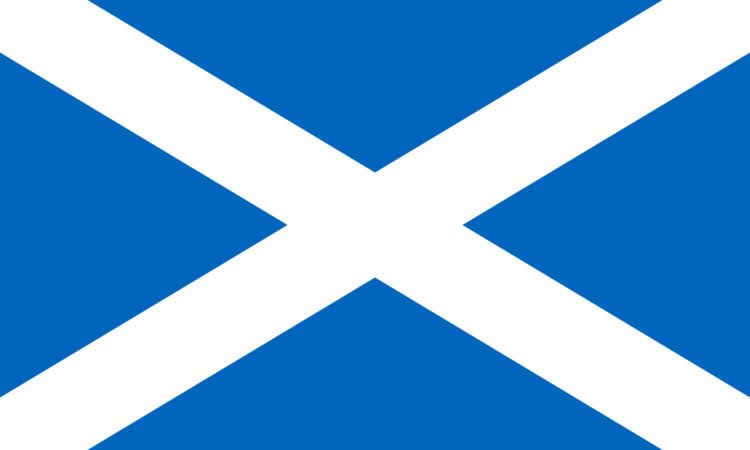 | ||
The Great Seal of Scotland (Scottish Gaelic: Seala Mòr na h-Alba) allows the monarch to authorise official documents without having to sign each document individually. Wax is melted in a metal mould or matrix and impressed into a wax figure that is attached by cord or ribbon to documents that the monarch wishes to make official. The earliest seal impression, in the Treasury of Durham Cathedral, is believed to be the Great Seal of Duncan II and dates to 1094.
Contents
History
The Chancellor had the custody of the King's Seal.
Strictly, the continuation of the Great Seal of Scotland was guaranteed by the Treaty of Union which provided that "a Seal in Scotland after the Union be alwayes kept and made use of in all things relating to private Rights or Grants, which have usually passed the Great Seal of Scotland, and which only concern Offices, Grants, Commissions, and private Rights within that Kingdom". Hence, the Scotland Act 1998 refers to the current seal as "the seal appointed by the Treaty of Union to be kept and made use of in place of the Great Seal of Scotland". Nevertheless, the seal is still commonly referred to as the Great Seal of Scotland.
Section 12 of the Treason Act 1708, still in force today, makes it treason in Scotland to counterfeit the seal.
The design of the Great Seal is a responsibility of the Lord Lyon King of Arms. The reverse of the seal shows the monarch on horseback, but is not changed from reign to reign—the current version is that engraved in 1911 for the accession of King George V. The obverse is inscribed "ELIZABETH II D G BRITT REGNORVMQVE SVORVM CETER REGINA CONSORTIONIS POPULORUM PRINCEPS F D" and the figure on it is the same as on the Great Seal of the United Kingdom.
The Great Seal is administered by the Keeper of the Great Seal, one of the Great Officers of State. From 1885 this office was held by the Secretary for Scotland, later the Secretary of State for Scotland. It transferred in 1999 to the First Minister of Scotland, whose place in the order of precedence in Scotland is determined by his or her office as Keeper of the Great Seal. In practice the Seal is in the custody of the Keeper of the Registers of Scotland, who has been appointed as Deputy Keeper.
List of Keepers of the Great Seal of Scotland prior to the Union
List of Keepers of the Great Seal of Scotland since the Union
The following are Keepers of the Great Seal, who served as Secretary for Scotland (1885–1926).
The following are Keepers of the Great Seal, who served as Secretary of State for Scotland (1926–1999).
The office of the Keeper of the Great Seal was transferred on 6 May 1999, to the First Minister, in accordance to the terms of section 45(7) of the Scotland Act 1998.
Register
Records of charters under the Great Seal of Scotland from 1306 to 1668 are published in the Register of the Great Seal of Scotland (Registrum Magni Sigilli Regum Scotorum).
https://archive.org/stream/registrummagnisi07scot#page/n5/mode/2up
